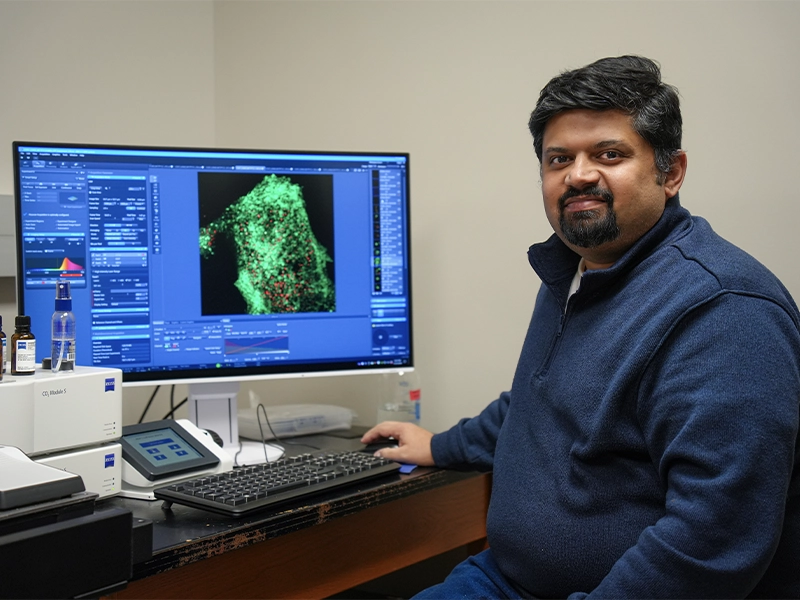UT Scientist Contributes to New Understanding of Cell Growth

Assistant Professor Amit Joshi joined an international group of colleagues to publish new research findings about cellular biology for an October 2024 cover story in Science. Their work explains the formation of an important mechanism in cellular growth and development in plants.
Channels in plant cell walls, called plasmodesmata, provide molecules with a bridge to move between cells, an essential phenomenon for cellular growth and development. The mystery has long been how these important channels form.
Joshi, a member of the Department of Biochemistry and Cellular and Molecular Biology since 2021, previously discovered two proteins that help form tube-like endoplasmic membrane in mammalian cells.
“We showed that these proteins are similar to the highly abundant reticulon proteins, which are known to tubulate endoplasmic reticulum membrane,” said Joshi. “We published these findings in Nature Communications in 2018.”
After reading the earlier paper, Professor Emmanuelle Bayer, of the Université de Bordeaux, Villenave d’Ornon, France, invited Joshi to collaborate in a study to determine if plant versions of these proteins do the same thing.
“To test this, we inserted plant MCTPs (proteins) into yeast cells,” said Joshi. “We discovered that plant proteins also tubulated endoplasmic reticulum membrane. Moreover, we found that these plant proteins are concentrated at plasmodesmata.”
The team’s research revealed that plasmodesmata bridges form through an incomplete process of cell division. Through a mix of genetic study, high-resolution microscopy, and modeling, they discovered that continuous connections within the endoplasmic reticulum prevent certain cellular events from occurring fully. As a result, certain cellular areas do not close completely during cell division, forming the pathways of plasmodesmata and enhancing communication between plants’ cells.
“Cell division, or cytokinesis, in plant and animal cells is different,” said Joshi. “Plant cells form a cell plate to divide the two cells due to the rigid cell wall. Plants are known to form plasmodesmata communication bridges between the daughter cells.”
Until this new study pinpointed it, the mechanism that stabilizes these bridges has been the unknown factor.
“During cell plate formation, we show that the endoplasmic reticulum membrane connects the daughter cells across fenestrae (small openings) and the plasma membrane molds around these tubules to form plasmodesmata,” said Joshi. “We show that plant proteins MCTP3, 4, and 6 stabilize the nascent plasmodesmata.”
Joshi and colleagues can now use these new findings to explore plant cell growth.
“This work will help us understand intercellular communication and signaling,” he said. “We are currently deciphering the role of these proteins in mammalian cells at multiple membrane contact sites.”
By Randall Brown